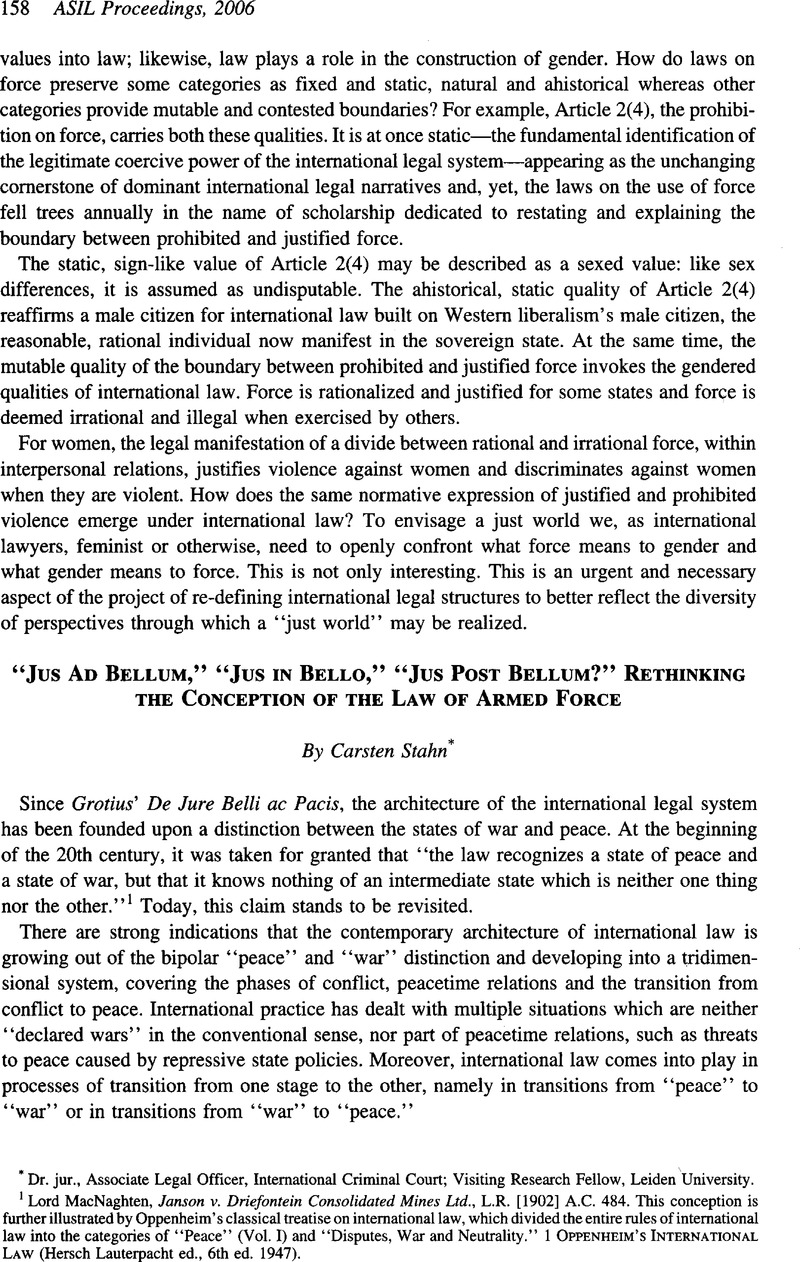No CrossRef data available.
Article contents
“Jus Ad Bellum,” “Jus in Bello,” “Jus Post Bellum?” Rethinking the Conception of the Law of Armed Force
Published online by Cambridge University Press: 28 February 2017
Abstract

- Type
- New Voices Panels
- Information
- Copyright
- Copyright © American Society of International Law 2006
References
1 Lord MacNaghten, Janson v. Driefontein Consolidated Mines Ltd., L.R. [1902] A.C. 484. This conception is further illustrated by Oppenheim’ s classical treatise on international law, which divided the entire rules of international law into the categories of “Peace” (Vol. I) and “Disputes, War and Neutrality.” 1 Oppenheim’s International Law (Hersch Lauterpacht ed., 6th ed. 1947).
2 For a short survey, see Carsten Stahn, Jus ad bellum—Jus in Bello . . . Jus Post bellum: Towards a Tripartite Conception of Armed Conflict, at <http://www.esil-sedi.org/english/pdf/Stahn2.pdf>. For an argument in favor of a “jus post bellum” in the context of just war theory, see Brian Orend, War and International Justice: A Kantian Perspective 57 (2000).
3 See Suarez, Francisco, The Three Theological Virtues, Disputation XIII, in Classics of International Law (Scott, James Brown ed., 1995)Google Scholar.
4 See Immanuel Kant, The Science of Right 53 (1790).
5 In this context, one may draw parallels to the distinction between “rules” and “principles” developed by Dworkin. “Rules” are applicable “in an all-or nothing fashion.” Principles may be balanced against each other “taking into account the relative weight of each.” Ronald Dworkin, Taking Rights Seriously 24 (1978).
6 They may be said to include inter alia: (1) a requirement of procedural fairness in the formation of peace settlements; (2) the demise of the concept of territorial punishment for acts of aggression; (3) the humanization of post-conflict reparations; (4) the exclusion of amnesties for serious crimes in peace settlements; (5) the need to institutionalize individual and group rights in postconflict peace processes; and (6) the move from collective responsibility to individual responsibility. See Stahn, supra note 2.


